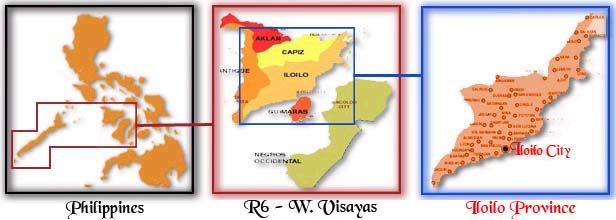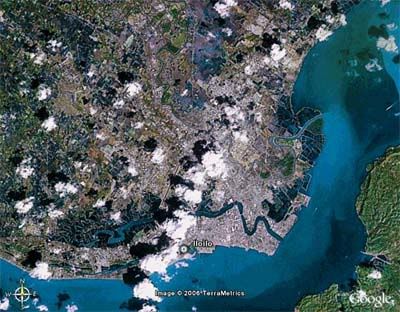Iloilo - Heart of the Philippines
Iloilo is the primary gateway to Guimaras. Motorized bancas pick up passengers from Ortiz Wharf, Iloilo City and docks at the Jordan Wharf in Guimaras. On the other hand, there is also a ferryboat, which will bring you to Jordan Wharf, available at Muelle Loney Street in front of the customhouse. Meanwhile, there is another pumpboat terminal in Parola going to Buenavista Wharf.
Iloilo is province of the Philippines, located in the center of the Philippine archipelago. Strategically located 283 statute miles from Manila, it is the gateway to the flourishing region that is Western Visayas. The province comprises the southeastern part of Panay Island, bordering Antique to the west and Capiz to the north. Just off Iloilo’s southeast coast is the island-province of Guimaras and across Panay Gulf and Guimaras Strait is Negros Occidental.
Iloilo has always been one of the country’s most important provinces. Merchants from China and India have long traded with the Ilonggos even before the Spaniards came, evidences of this flourishing civilization are displayed in Museums and Private Galleries. You can still see the Spanish architectures from the old buildings in downtown Iloilo and a big old Roman Catholic Church, with a plaza in front of it in every town.
Anent the tourism sites in the city and its environs, one can visit landmarks that surprisingly resemble Europe, notably the Molo church, the Jaro Cathedral, the Art deco Lizares mansion and the Nelly Garden to name a few. Not only are many major tourist and historical attractions located in the city, it also serves as a stopover for tourists heading to the beaches of Boracay and Palawan. Just a few minutes drive from Iloilo Domestic Airport, tourists will find sprawling malls scattered across the city wherein they can replenish supplies as well as their energies for the hectic sand-and-water environment that are soon to follow. Hotels and restaurants abound; a world-class golf course is located just outside the city proper in Sta. Barbara.
People from Iloilo are called Ilonggos. They are known for their charm and sweetness that comes from the musical tonation of their dialect, Hiligaynon. You would not be able to tell if an Ilonggo is mad at you by the way they speak, which always sounds like some one crooning a love song to you. English and Tagalog are also widely spoken and understood especially in urban areas.
Rice is the major crop in the province of Iloilo. Fish and marine products are considered the main source of livelihood in the southern and northern Iloilo. There are also non-traditional products in the province which include processed food, fruits and vegetables, gifts, furniture, and others. Traditional products include sugar, coco oil, and lime products, among others.
There are 114 private and government banks all throughout the province and city of Iloilo, in addition to 40 rural banks found in most municipalities, at least 6 malls, and many department stores. The Oldest Golf Course in South East Asia is found in Santa Barbara town in Iloilo.
The City of Iloilo is the capital city of the province of Iloilo in the Philippines. It is the regional center and the main economic hub of the Western Visayas region and one of the major urban centers of the country.
Iloilo City is a Educational Capital of Western Visayas. Including Iloilo’s 6 universities, there are 55 tertiary schools in Iloilo City and Province.
Iloilo City is surprisingly cosmopolitan for a mid-sized third world Asian city. There are a small number of expatriates residing in the city. The most notable and most visible are the Koreans who come to the city to study english. Then there are the ethnic Chinese who have significant economic influence in the city. There are also Indian moneylenders, Iranian and Pakistani students, Spanish clergy and nuns attached with the various religious orders and some middle aged Americans, Brits, Germans, Canadians and Australians who have Filipino spouses.
The National Statistics Office reported that Iloilo province has a population total of 1,925,002, and Iloilo City has 365,820 as of the 2000 survey.
Source: Department of Tourism - Western Visayas, Wikipedia, Iloilo Province Official Website, Iloilo City Official Website



Post a Comment